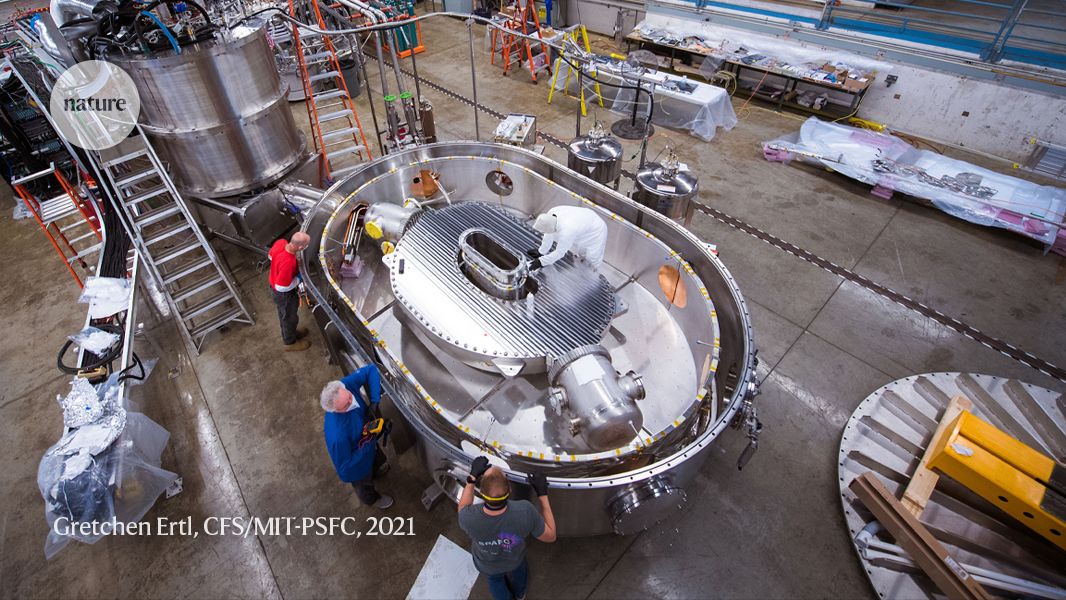Several fusion researchers who don’t work for private firms told Nature that, although prospects are undeniably exciting, commercial fusion in a decade is overly optimistic. “Private companies say they’ll have it working in ten years, but that’s just to attract funders,” says Tony Donné, programme manager of the Eurofusion consortium which conducts experiments at the state-run Joint European Torus, established at Culham in the late 1970s. “They all have stated constantly to be about ten years away from a working fusion reactor, and they still do.”
Timelines that companies project should be regarded not so much as promises but as motivational aspirations, says Melanie Windridge, a plasma physicist who is the FIA’s UK director of communications, and a communications consultant for the fusion firm Tokamak Energy, in Culham. “I think bold targets are necessary,” she says. State support is also likely to be needed to build a fusion power plant that actually feeds electricity into the grid, adds Ian Chapman, chief executive of the UK Atomic Energy Authority (UKAEA).
But whether it comes from small-scale private enterprise, huge national or international fusion projects, or a bit of both, practical nuclear fusion finally seems to be on the horizon. “I’m convinced that it’s going to happen”, says Chapman. Chris Kelsall, chief executive of Tokamak Energy, agrees. “Sooner or later this will be cracked,” he says. “And it will be transformative.”
Seventy-year dream
Nuclear fusion, says Klinger, is “the only primary energy source left in the Universe” that we have yet to exploit. Ever since the process that powers the stars was harnessed in the 1950s for hydrogen bombs, technologists have dreamt of unlocking it in a more controlled manner for energy generation.
Existing nuclear power plants use fission: the release of energy when heavy atoms such as uranium decay. Fusion, by contrast, produces energy by merging very light nuclei, typically hydrogen, which can happen only at very high temperatures and pressures. Most efforts to harness it in reactors involve heating the hydrogen isotopes deuterium (D) and tritium (T) until they form a plasma — a fluid state of matter containing ionized atoms and other charged particles — and then fuse (see ‘Fuel mix’). For these isotopes, fusion starts at lower temperatures and densities than for normal hydrogen.
D–T fusion generates some radiation in the form of short-lived neutrons, but no long-lived radioactive waste, unlike fission. It is also safer than fission because it can be switched off easily: if the plasma is brought below critical thresholds of temperature or density, the nuclear reactions stop.
Fuel mix
Many reactors fuse deuterium (D) with tritium (T) to release energy. This mix
ignites, or creates a self-sustaining fusion reaction,at around 100 million
kelvin. It produces neutrons, which can make the chamber radioactive.
Other reactions, such as fusing protons (p) with boron-11 (11B),
don’t produce neutrons, but ignition requires higher temperatures.
What makes it so difficult to conduct in a controlled manner, however, is the challenge of containing electrically charged plasma that is undergoing fusion at temperatures of around 100 million kelvin — much hotter than the centre of the Sun. Generally, researchers use magnetic fields to confine and levitate the plasma inside the reactor. But instabilities in this infernal fluid make containment very difficult, and have so far prevented fusion from being sustained for long enough to extract more energy than is put in to trigger it.
This is necessarily big science, and until this century, only state-run projects could muster the resources. The scale of the enterprise is reflected today in the world’s biggest fusion effort: ITER, a fusion reactor being constructed in southern France and supported by 35 nations, including China, European Union member states, the United States, Russia, South Korea and Japan, with a price tag of at least $22 billion.







More News
Judge dismisses superconductivity physicist’s lawsuit against university
Future of Humanity Institute shuts: what’s next for ‘deep future’ research?
Star Formation Shut Down by Multiphase Gas Outflow in a Galaxy at a Redshift of 2.45 – Nature